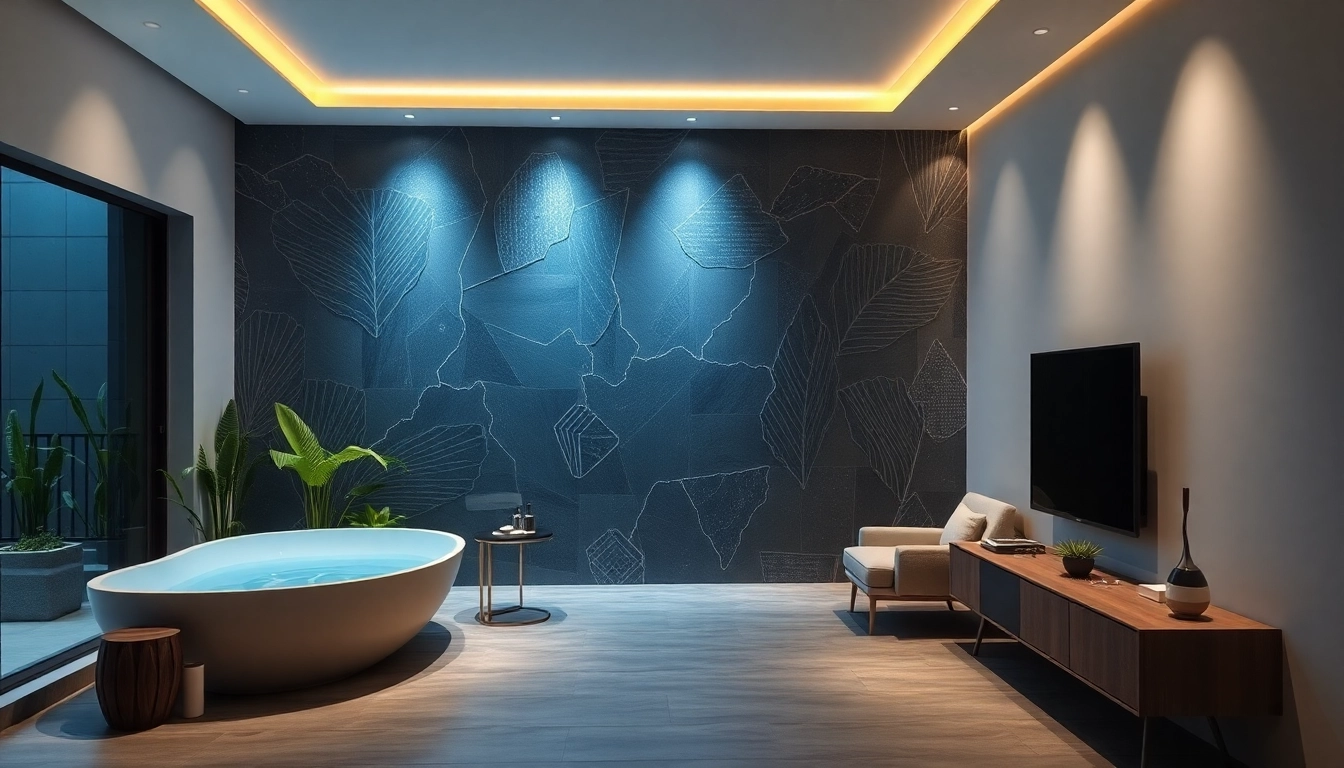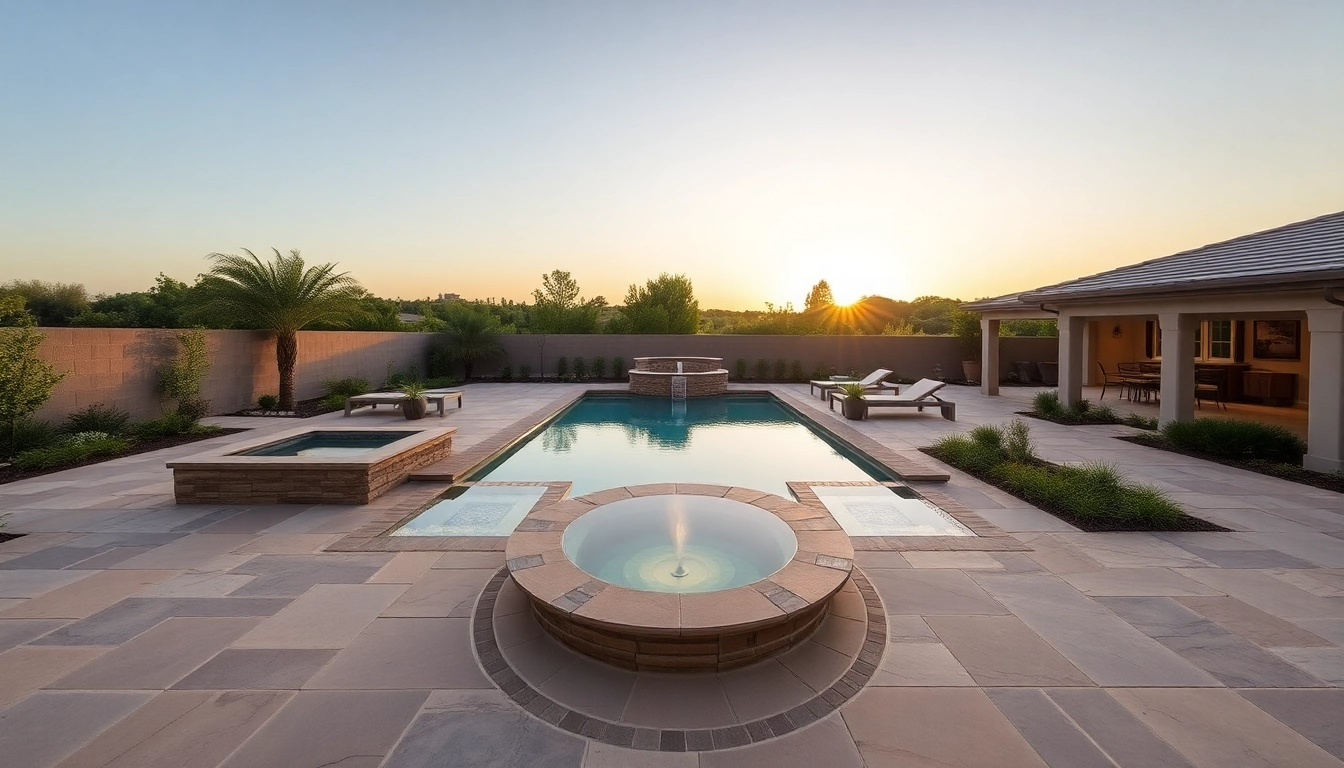Introduction to Water Vapor Fireplaces
In recent years, water vapor fireplaces have gained significant popularity as an innovative alternative to traditional fireplaces. As homeowners seek more eco-friendly and mesmerizing options for their living spaces, water vapor fireplaces emerge as a perfect solution, combining aesthetics with modern technology. These unique fireplaces create a stunning visual effect that mimics real flames, all while being safe and functionality-focused.
What is a Water Vapor Fireplace?
A water vapor fireplace is an electric fireplace that utilizes ultrasonic technology to produce a fine mist that resembles flames. This mist, combined with LED lighting, creates a vibrant and realistic illusion of a flickering fire. Unlike traditional fireplaces, water vapor fireplaces do not burn wood or gas, making them a cleaner and safer option for homes. They are ideal for creating ambiance without the hazards associated with real flames.
History and Technological Innovations
The concept of using vapor to simulate fire has its roots in early 20th century visual effects and theatrical productions. Over the decades, the advancement in ultrasonic technology has enabled the creation of more sophisticated and realistic flame effects. Today, companies like Aquafire and Dimplex have pioneered the development of water vapor fireplaces, providing consumers with a safer and more eco-friendly alternative to traditional wood-burning or gas fireplaces.
With innovations focusing on efficiency, energy consumption, and user experience, the design and functionality of water vapor fireplaces continue to evolve. Manufacturers are introducing models that simplify installation, enhance visual effects, and improve energy use, making these fireplaces more appealing to homeowners.
Advantages of Water Vapor Fireplaces
Water vapor fireplaces offer numerous benefits that make them a compelling choice for any homeowner:
- Safety: Since they do not produce real flames, these fireplaces are safe to use around children and pets, minimizing the risk of accidental burns.
- Energy Efficiency: They consume significantly less energy than traditional heating systems, as they primarily focus on aesthetics rather than heating a room.
- Minimal Maintenance: Water vapor fireplaces require less maintenance compared to traditional fireplaces, with no soot, ashes, or chimney cleaning needed.
- Environmental Impact: They do not emit harmful gases, making them an eco-friendly heating solution.
- Year-round Use: Water vapor fireplaces can be enjoyed year-round, as they provide ambiance without generating excess heat, making them perfect for warmer months.
Understanding How Water Vapor Fireplaces Work
Ultrasonic Technology in Fireplaces
The key technology behind water vapor fireplaces is ultrasonic transducers, which vibrate at high frequencies. This vibration breaks down water into ultra-fine droplets, creating a mist that escapes the unit. When illuminated by LED lights, this mist creates a stunning flame-like effect that is both captivating and realistic. The use of ultrasonic waves ensures that the flames are not only mesmerizing but also safe to touch, adding an extra layer of assurance for families.
Creating the Illusion of Flames
The realistic flame illusion is the result of several factors, including lighting, color, and movement of the generated mist. LED lights are strategically placed to shine through the mist, reflecting and refracting to mimic the natural flicker of flames. Advanced models integrate color-changing technology, allowing users to customize their fireplace’s appearance to suit their mood or décor.
Health Benefits of Water Vapor
Interestingly, water vapor fireplaces can also offer health benefits. The produced mist can help to humidify the air, combating dryness that often plagues indoor environments, especially during winter. Improved humidity levels can lead to better respiratory health and overall comfort, creating a cozy and inviting atmosphere in the home.
Pros and Cons of Water Vapor Fireplaces
Benefits of Owning a Water Vapor Fireplace
The advantages of water vapor fireplaces extend beyond safety and ambiance:
- Aesthetic Appeal: They provide a unique and modern aesthetic, enhancing the visual appeal of any room.
- Flexibility: Water vapor fireplaces come in various designs and can be installed almost anywhere, from homes to commercial spaces.
- Convenience: Operating these fireplaces is usually as simple as flipping a switch, with most models featuring remote control options.
Limitations and Maintenance Considerations
Despite their many benefits, there are some limitations to consider:
- No Real Heat: While they provide stunning visuals, water vapor fireplaces do not generate substantial heat, which might not satisfy those looking for a primary heat source.
- Humidity Issues: High humidity levels can lead to issues like mold if not monitored. It’s crucial to ensure that rooms are well-ventilated.
- Regular Maintenance: Owners need to maintain the unit, as the water reservoir requires refilling and the components may need periodic cleaning.
Comparison with Traditional Fireplaces
Water vapor fireplaces emphasize aesthetics and safety over heat production, making them less suitable as a primary heating source compared to traditional wood-burning or gas fireplaces. Traditional fireplaces provide significant warmth and can be a focal point for gathering but come with higher maintenance, safety risks, and environmental impact. Therefore, evaluating what you want from a fireplace is essential.
Selecting the Right Water Vapor Fireplace
Important Factors in Selection
When choosing a water vapor fireplace, consider the following aspects:
- Size: Measure the area where you intend to place the fireplace to ensure the model fits harmoniously into the space.
- Design: Consider your home’s aesthetic. Choose a style—from wall-mounted units to more elaborate freestanding models—that suits your preferences.
- Features: Evaluate the features that are most important to you, such as remote control operation, adjustable mist levels, and lighting options.
- Price: Set a budget. Water vapor fireplaces come in various price ranges, so determine what features are most essential based on your financial plan.
Installation and Maintenance Tips
Installation of water vapor fireplaces is generally straightforward, but there are a few steps to ensure optimal performance:
- Read the Manual: Always begin with the manufacturer’s instruction manual to understand specific requirements and recommendations.
- Location Matters: Place the fireplace in an area where you want to enhance ambiance without blocking airflow or access to water supply lines.
- Routine Checks: Regularly check the water levels and clean the unit to prevent buildup that can affect performance.
Recommended Brands
Several brands have distinguished themselves in the water vapor fireplace market. Popular options include:
- Aquafire: Renowned for advanced technology and stunning designs that replicate the beauty of real flames.
- Dimplex: Offers a variety of models and is well-known for its quality and reliability.
- Modern Blaze: Provides a range of eco-friendly options that combine style and function.
Conclusion and Recommendations
Summary of Water Vapor Fireplace Benefits
Water vapor fireplaces present an innovative approach to home heating and aesthetics. They offer a blend of safety, environmental consciousness, and visual appeal, allowing homeowners to enjoy the ambiance of flames without the risks associated with traditional options.
Final Thoughts for Prospective Buyers
For those considering the addition of a water vapor fireplace, evaluate your specific needs regarding ambiance, design preference, and the intended use of the unit. While not designed to be a primary heating source, these fireplaces excel in creating a cozy and inviting environment in your home.
Guidelines for Safe Use of Water Vapor Fireplaces
Even with the safety features provided by water vapor fireplaces, it is essential to use them responsibly:
- Keep the unit out of reach from small children and pets if they are curious or prone to meddling.
- Ensure adequate ventilation in the room to avoid excessive humidity and associated problems.
- Always follow maintenance guidelines provided by the manufacturer to ensure optimal performance and longevity.



